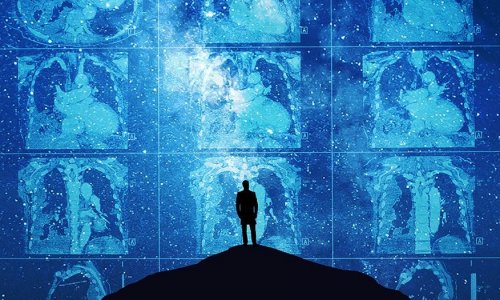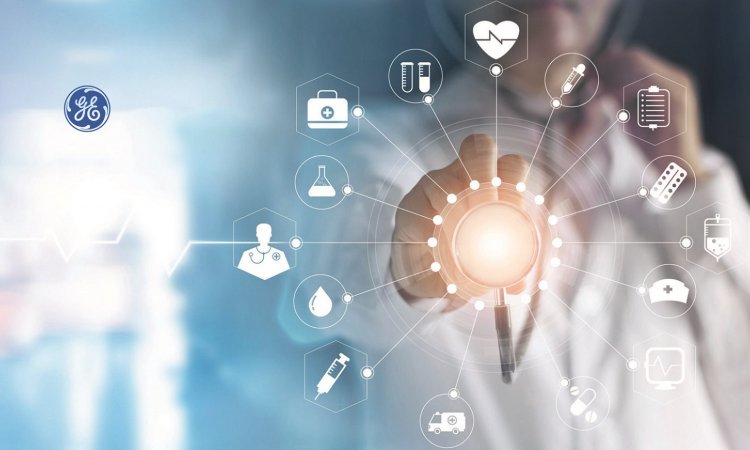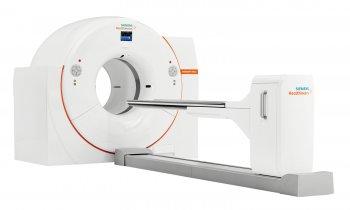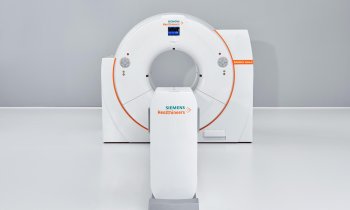Molecular imaging
GE was the first to undertake molecular imaging development on a large scale. 'You have to be a very special company to work in this discipline,' Reinaldo Garcia, President and Chief Executive Officer of GE Healthcare International, pointed out, when we asked for an update on his company's progress in this field

RG: This is not simply another technology; you need a comprehensive understanding of many technologies and sciences to be able to master it. You need to understand not only how the equipment works, but also to understand (and have) biology and chemistry technologies. Many years ago, when we realised we needed this knowledge to pursue the road to molecular imaging and other things.
What is important from a molecular imaging standpoint is that it improves sensitivity and specificity. We need to understand the behaviour of cells and molecules, the way they react to certain stimuli that are created via another chemical component in the body such as an imaging agent, and tracers.
EH: Have there been any significant advances at GE since we last spoke on this subject?
It’s an evolution and will continue to evolve. Only a few months ago, for example, we received approval to use DaTSCAN to identify dementia with Lewy Bodies.
This is a new use for DaTSCAN. You have to differentiate Parkinson’s disease from other tremors, because if you use the same treatment, you can actually cause more damage. It differentiates between Parkinson’s and Essential Tremor. With DaTSCAN you can now identify dementia with Lewy bodies, as well as Parkinson’s disease. This is important, because treatment is specific to each condition.
A great application we have is a whole-body imaging MR that identifies areas showing inflammatory conditions that could potentially be cancer. It’s just like PET. It’s an MR image; it works like a PET but there is no injection. It is another way of thinking about molecular imaging. We are the only ones who can do whole-body imaging that can perform a PET-like application.
Right now we are working on tracers to identify new degenerative diseases and cardiac conditions. As the research continues and the indications are validated and approved, they could be used to identify specific diseases using our imaging agent in conjunction with a PET machine. Now, we know what we’re doing on the imaging side; we can optimise the equipment, and, because of that, we can optimise the imaging agent. That’s why we’re now able to develop this product.
Where could this development lead?
For PET applications, for example, FDG (fluorodeoxyglucose) is currently the generic kind of isotope that identifies tumours. But if you want to find out specifically whether it is benign or malignant, and what kind of tumour, you have to use a more specific tracer. That’s where it will lead – to the identification of specific kinds of cancer with much more certainty and sensitivity. That means you’ll be able to find cancers much earlier, when they are smaller, and also be more certain of what the disease is. And it’s now possible to significantly regress the disease and change the outcome for the patient. If you don’t treat people, most likely they will die. You can in many cases remove the cancer either surgically or by chemotherapy. If the cancer is metastatic and has already spread to other parts of the body, it is more difficult and in many cases impossible to treat. If it is caught early, you can manage it and there’s a high probability of eliminating it. The earlier you find a tumour, the greater the chance of treating it. Studies have shown that if you catch breast cancer at phase one, the patient’s chance of survival over the next five years is more than 90%. At phase four it is 20%. It’s similar with colon cancer.
So, by using molecular imaging with specific tracers and using PET/CT technology, you can identify tumours when they are very small, and this offers a greater chance of impacting it.
It’s the same with cardiac disease. In Europe and the United States, 65 million people have heart problems but no symptoms. They don’t have a clue that they are ‘the walking wounded’. If we can identify them early, they could receive a simple treatment to prevent coronary disease or a heart attack. That’s where our technologies are becoming more critical.
Politicians should be alerted to these cost factors.
Yes. If I have a heart condition and am heading for a heart attack, I could take drugs to eliminate that probability; they’d cost me $1,500 a year. If I don’t know about my condition, then have a heart attack and survive it, treatment would cost more than ten times the $1,500. It is far less costly to address the problems earlier. Keeping things under control and never allowing me to have a heart attack is just one example that shows how significantly less expensive this is.
Along with molecular imaging equipment, what else might GE launch in the next five years?
We won’t deviate from this path of Early Health. This is an important strategy, one that really defines the way we invest our money in R&D, the way we operate and the way we communicate. Everything I have been talking about has been about Early Health. We are really trying to address disease-specific challenges. It’s not about making equipment faster, greater, smaller – it’s about what the big disease challenges are and what we need to do to address them. That’s what defines our work today.
You can’t abandon equipment development – you have competitors.
No, but equipment will evolve to adapt to diseases. Ultimately, what are doctors for? To identify diseases; so if we can meet the challenge of diseases, doctors will buy our equipment, not equipment from somebody else. Because of the focus on disease, equipment will evolve; think about the VCT (volume computed tomography). We are trying to resolve a big cardiology challenge: How can I have consistently good images of the heart? To do this, you have to image the heart over a very short time. So we developed a product to image the heart in five beats and it is a big success. If you pursue the strategy of resolving disease, your product will be developed to that end and it will be much more successful than if a bunch of engineers simply developed a product.
Among other things, we are focusing mainly on three areas that are very important to us: cardiology, oncology and neurodegenerative diseases. MR can be used for cardiology, along with CT, ultrasound, PET, cath labs and even X-rays. All these technologies have been adapted and focused on one disease. Adapting the technology according to the disease is, I believe, an important strategy. If you concentrate on Early Health, which means seeing earlier and diagnosing earlier so you can treat earlier, you should be able to continue that strategy with existing systems. Of course, new products to tackle these three major diseases will also come on to the market.
08.03.2007











